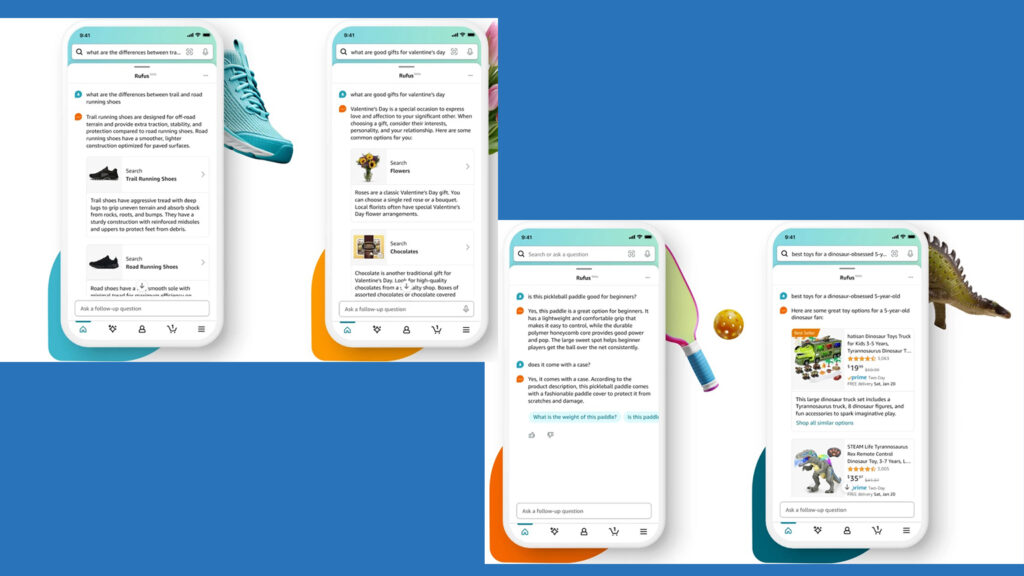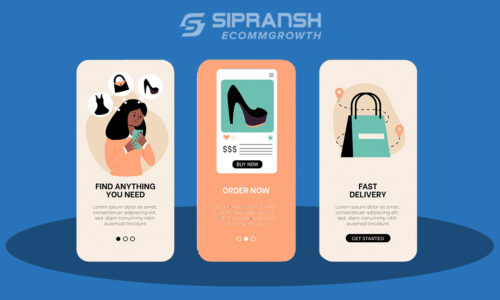
AI isn’t the future. It’s already here and Amazon is also leveraging AI to its advantage. Soon after launching generative AI to help sellers write product descriptions, Amazon launched Rufus, the AI-powered expert shopping assistant. While Rufus may not possess all the bells and whistles of a fully advanced AI system just yet, its potential cannot be ignored. In the near future, more and more shoppers are going to rely on AI assistants like Rufus and brands must adapt to it by optimizing their Amazon listing for these assistants. In this article, we’re going to go through the actional steps you can take to ensure your product listings resonate seamlessly with AI shopping assistants like Rufus.
What is Amazon Rufus?

Rufus is Amazon’s AI powered shopping assistant who is trained on a vast array of data, including Amazon’s extensive product catalog and information from across the web. Rufus helps customers by answering their questions, giving them relevant product recommendations and facilitating comparisons. With its ability to generate answers based on relevant information from the product detail page, Rufus can help make shoppers a confident purchase decision. Post its launch, Rufus has been gradually rolled out to select customers in the U.S. Rufus operates in beta mode and is only available to customers using the Amazon app.
What can Rufus do?

IMAGE TAKEN FROM AMAZON
1) General product research: Rufus can provide information and guidance on various product categories. Customers can ask questions like “what to consider when buying headphones?” or “what are clean beauty products?” to receive helpful insights to guide their shopping decisions.
2) Shop by occasion or purpose: Customers can search for products based on specific activities, events, or purposes. Rufus suggests shoppable product categories and related questions, such as “what do I need for cold weather golf?” or “I want to start an indoor garden.”
3) Comparison of product categories: Rufus assists customers in comparing different product categories. By asking questions like “what’s the difference between lip gloss and lip oil?” or “compare drip to pour-over coffee makers,” customers can make more confident purchase decisions.
4) Recommendations: Customers can ask for recommendations tailored to their needs. Whether it’s “good gifts for Valentine’s Day” or “best dinosaur toys for a 5-year-old,” Rufus generates personalized results to help customers find the perfect products.
5) Product-specific questions: While on a product detail page, customers can ask Rufus specific questions about individual products. For example, “is this pickleball paddle good for beginners?” or “is this jacket machine washable?” Rufus generates answers based on listing details, customer reviews, and community Q&As.
How to optimize your listing for Rufus?

1) Add only relevant keywords
Choose keyword relevance over volume. This might seem like common knowledge but sellers are often tempted to add high volume keywords thinking it will help rank their listing higher in the SERPs.
If you want your listing to be relevant to AI powered shopping assistants like Rufus, be sure to avoid overly broad keywords that are not directly related to your product. For example, if you are selling a knit sweater, avoid adding generic terms like clothing must-haves or fashion cloths. Although really high in volume, they’ll do nothing good to your listing. Instead focus on keywords that accurately represent your product. This will also help Rufus match your product with relevant customer searches.
When we say don’t add broad terms in your listing, we don’t mean that you should completely abandon them. These terms should be added in your search term field to better reach and visibility.
2) Keep your listing informative
The more information you add about your product, the easier it will be for Rufus to accurately recommend your product to the right audience.
- Titles: Instead of mindlessly packing your title with keywords, add 1-3 most relevant keywords in your title and use the remaining space to effectively communicate your product’s USPs and specifications. This prompts clarity and readability. Avoid using vague or generic terms that are added just because they are “high volume.” Rufus uses the title to understand the primary focus of your listing, so make it descriptive and informative.
- Add informative bullet points: Use bullet points to highlight key product features and selling points of your product. Be sure to organize information in a concise and scannable format. Rufus relies on structured data to understand and present product information, so well-organized bullet points can significantly improve your listing’s visibility and relevance.
- Detailed product description: Even if you have an A+ Content, make sure to add a detailed product description. Amazon’s A9 algorithm indexes your description from the backend, so it makes sense that Rufus does that too. Use your product description section to expand on your product features and tell a story about your product.
- Answer common questions: Anticipate and address common questions or concerns that customers may have about your product. Offer tips for usage, or address any potential objections. By proactively addressing customer queries, you are making it easy for Rufus to answer shopper’s questions about your product.
3) Keep your listing looking pretty
Amazon likes pretty listings, customers like pretty listings and so does Rufus. Make sure that all the elements of your listing, especially images, Brand Story and A+ Content are visually cohesive and aligned with your brand identity. Consistent branding conveys professionalism and trustworthiness, two of things that Amazon and Rufus both value.
Invest in high-quality Amazon infographic images that beautifully represent your product. Although we doubt that Rufus can actually scan through images to read the text, we do believe that a listing with 7-8 high quality images leaves a positive impact. Rufus can also analyze image metadata to understand the visual attributes of your product and present it more effectively to users.
Incorporate engaging multimedia elements, such as videos for a richer shopping experience. Videos can demonstrate product usage, showcase unique features, and highlight benefits in a more dynamic and compelling way than static images alone.
4) Optimize your listings for smaller screens
Since Rufus is only available to apps, we recommend optimizing your listings for smaller screens. Keep your copy informative yet not overwhelming. The design of your A+ Content and images should be able to fit smaller display sizes. This streamlines navigation for a more intuitive user experience. By catering to the unique needs of mobile users, you increase the likelihood of your products being discovered and recommended by Rufus to potential customers browsing on smartphones and tablets.
5) Stay informed about AI updates
Since Rufus is still in beta, Amazon is yet to announce new advances and updates. As AI technology evolves and algorithms are refined, understanding how these updates impact search algorithms, ranking factors, and customer behavior can give you a competitive edge.
Stay vigilant of these new AI developments to remain relevant on the platform and maximize your product’s visibility. This proactive approach ensures that you’re well-positioned to leverage new AI capabilities and maintain a vigilant approach.
Prepare for tomorrow, today
These Amazon optimization tips tailored for Rufus are very similar to our conventional listing optimization strategies. While it might not seem important at present, the growing dominance of AI in e-commerce suggests that optimizing for Rufus will become increasingly important in the coming months or years.
By initiating these optimizations now, you’re not only gaining a competitive edge but also future-proofing your listings for tomorrow. Being proactive in adapting to these changes positions you ahead of the curve. If you need assistance in implementing these strategies, don’t hesitate to reach out to our Amazon experts.






